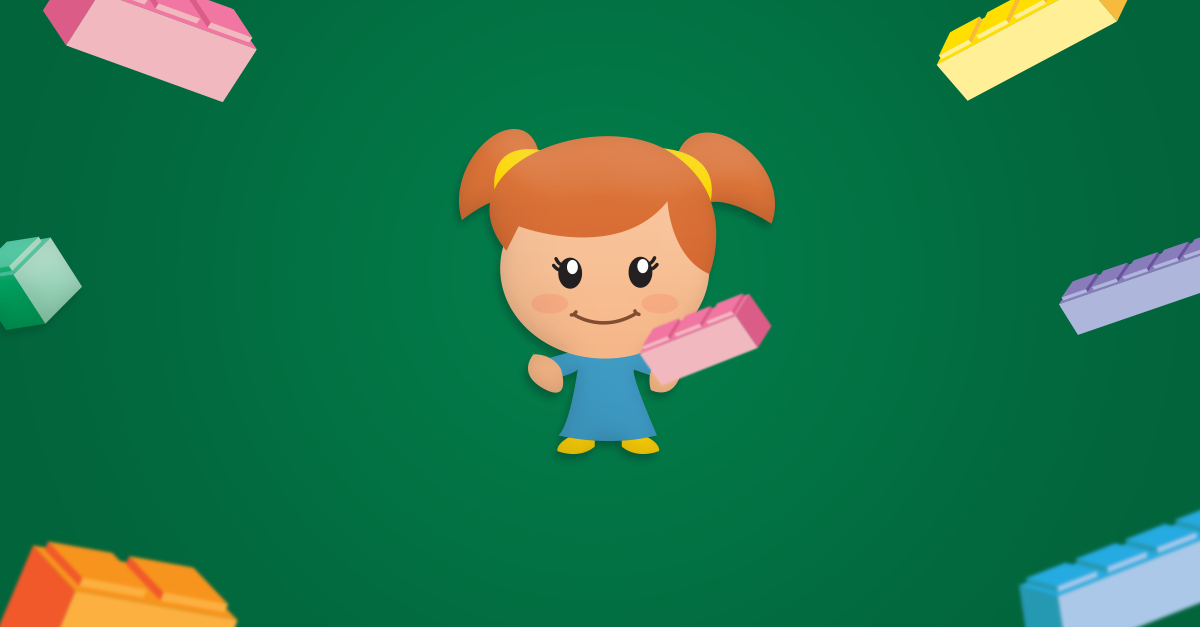Should Your Preschooler Use Math-U-See Blocks?
You can prepare your preschooler for Math-U-See by providing her with purposeful activity and play in advance.

Perhaps it’s happened in your house. It’s time for Math-U-See, and your older children are getting out their workbooks and manipulatives. In the meantime, your preschooler, drawn to the colorful blocks, asks, “Can I use the blocks, too?” Your child isn’t ready for Primer yet, so you really don’t have anything planned. Is it all right to let your child just play with the blocks, or are there meaningful activities you can do to help your child prepare for Primer?
Manipulatives Research
Quite a bit of research has been done in the area of using manipulatives for math instruction. From this research, there are two important principles that parents using Math-U-See should keep in mind.
First, manipulatives work best when students view them as “tools”, like a ruler or compass, rather than toys.
Second, manipulatives do not teach math in and of themselves; it is only when a student uses them under the guidance of an instructor that he comes to understand their meaning and their use as representations of mathematical concepts. (Source)
Therefore, if you’re going to be using Math-U-See with your current preschooler, it’s probably better for you to guide your child through purposeful activity, helping them get the most out of their play.
Manipulatives Activities
So what would this “purposeful activity” look like? If a child isn’t ready for Primer, you don’t want activities that involve actual numbers or counting; instead, you should aim for developing pre-number concepts and familiarity with the blocks as learning tools. The activities you choose can address any of these four areas:
Identifying Block Colors
The association between the color of each block, the length of the block, and the number that the block represents will all be fundamental concepts in the Primer level of Math-U-See. You can begin developing this understanding by completing the following activities (in order of increasing difficulty):
• Play “Simon Says”, giving specific directions using the colors of the blocks (ex., “Put a pink block on your knee”).
• Have your child trace around each block and color the rectangle correctly.
• Give your child a paper with block tracings. Have him use the blocks to determine which color each should be and fill in the rectangle. [Download a free printable for this activity]
• See if your child can color in the block tracings correctly, without using the blocks as a reference.
• Have your child close his eyes. Give him two blocks to feel and tell their colors (ex., pink and brown). Can he guess which block is which just by feeling them?
These activities will help your child become familiar with the block colors before associating them with actual numbers in Primer.
Exploring Relationships Between the Blocks
These activities develop an intuitive sense of number relationships, which will be important when your child uses the blocks in Primer to model concepts such as greater than and less than.
• Use a paper of block tracings. After your child has correctly identified the color of one block, see if she can identify other tracings that are the same size and will be the same color. Have her use the blocks to check her guess.
• Have your child put the blocks in order of length, both forward and backward.
• Put the blocks in order and then play “What’s Missing?” Have your child cover her eyes while you take a block away from the order. Can she tell which color is missing?
• Play “Match Me.” Lay down a block and have your child find groups of blocks that are just as long as the original block. (For added difficulty, lay down two or three blocks end to end and have your child find matching combinations.)
• Play “Cover the Block”. Have your child take a red hundred-block and cover it with smaller blocks. There should be no gaps and no blocks extending over the side. Talk about the different ways that a row can be filled (ex., two light blues, a brown and two greens, etc.).
Creating Patterns
Once the child learns to associate the blocks with numbers in Primer, he will be able to extend his understanding of patterns to those numbers.
• Put the blocks in order of length. Remove every other block and have your child say the color pattern (ex., dark green, pink, light blue, tan, light green).
• Have your child make other repeating patterns with the blocks (ex., yellow, pink, yellow, pink).
• Play “Copy My Pattern.” Have your child make a pattern, and you copy it with your blocks. Take turns.
Sorting the Blocks
These activities help children learn how to organize information and think logically—both important skills to support mathematical reasoning.
• Simply have your child dump out the blocks and put them back into the right compartments of the plastic tray.
• Ask your child to group the blocks in different ways (long/short blocks, light/dark colors, etc.). Encourage him to come up with his own groupings. Begin with two groups and then move to three, if your child is able.
Note that none of these activities actually have the child count or refer to numbers. Instead, you are using the blocks to develop cognitive skills that lay a foundation for the Math-U-See program. These activities have the added benefit of making math fun, which will build confidence and encourage understanding. Meaningful activities with the Math-U-See integer blocks are a wonderful way to start your preschooler on the path to lifelong learning!
